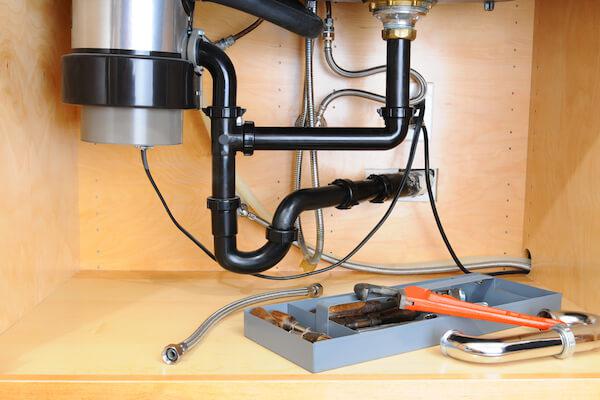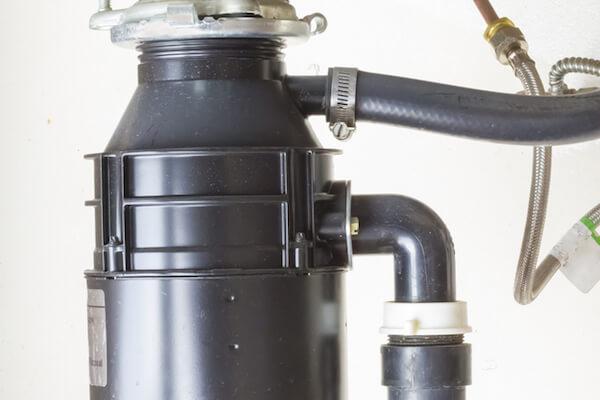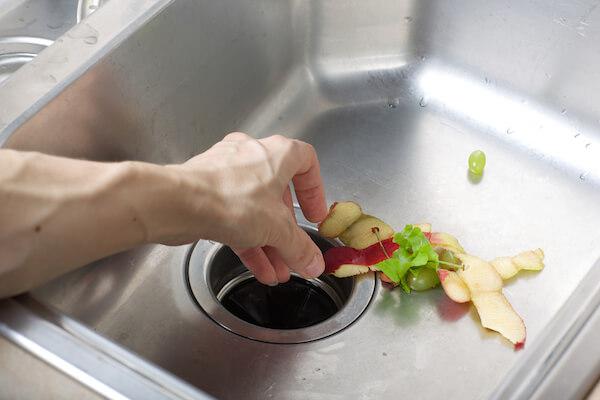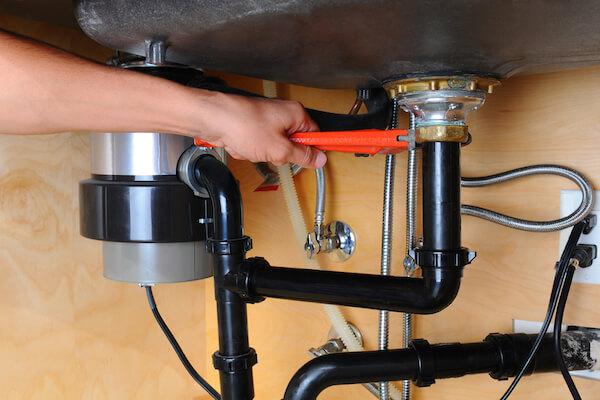How Does a Garbage Disposal Work
July 7, 2017
t makes our lives simpler. Our homes cleaner. Our meal clean-up is easier. You probably use your garbage disposal almost every single day, but do you know how it really works? If it stopped working or started malfunctioning, would you know what to do?
Understanding how your garbage disposal works and what makes it stop working can help you maintain it and keep it running for a long time. You’ll even know how to fix it in case something goes wrong. Here’s everything you should know about the miracle device that is the disposal.

Where It Is
Your garbage disposal is the round, cylindrical device mounted beneath your kitchen sink. The cylinder you see under the sink is hollow and contains the disposal’s motor and all the mechanized parts that make it work.
The disposal’s motor receives power from a power cord that plugs into a conventional wall or floor outlet. You can probably see the power cord running from the outlet to the underside of the disposal.

How It Works
Here are the parts of the disposal that work together to grind up food into a drain pipe-safe slurry.
Hopper Chamber
The hopper chamber is the hollow cylinder that houses the disposal. Hopper chambers have two segments: the upper and lower chambers. Food that enters the disposal collects in the upper hopper chamber before it’s shredded.
The lower hopper chamber is insulation-lined and contains the disposal’s motor. This section also connects to the waste line. After the disposal grinds it up, food moves through one segment of the lower hopper chamber on its way out to the drain pipe.
Flywheel and Shredder Ring
The shredder ring sits between the upper and lower hopper chambers, in the center of the disposal unit. The flywheel is a rotating metal turntable attached to the bottom of the shredder ring. This turntable catches food and prevents it from entering the lower hopper chamber until it’s small enough to pass through small holes in the sides of the shredder ring.
The inner walls of the shredder ring are covered in tiny, sharp grooves. These grooves help grind up and break down food chunks on the flywheel once the disposal is activated. The flywheel catches food and connects to the motor and the rotating impellers.
Motor and Impellers
A garbage disposal’s motor usually generates around ½-¾ horsepower’s worth of force. When you turn it on, the motor rotates the flywheel and the impellers attached to it at up to 2000 RPM.
The impellers are the disposal’s “blades”. When the motor activates, the impellers spin in tandem with the flywheel. The motion of the rotation flings food chunks into the grooves of the shredder ring repeatedly. This process continues until the food chunks have become so small that they slip past small openings in the shredder ring and slide down the drainpipe.
Waste Line Connector
The waste line connector is in the lower hopper chamber. When ground-up food falls through the shredder ring, it enters the opening in the waste line connector and flushes out of the disposal and into a drain pipe. The drain pipe linked to the waste line connector works like any other, and the ground-up food ends up in the sewer.

Dos and Don’ts
Now that you know how your disposal works, you’ll be able to understand what you should and shouldn’t use it for, and why.
Do
- Always run cold water while using your disposal
- Use the disposal to process easily-ground up food waste such as leftover meat and vegetables
- Make sure the disposal is plugged in before you use it
- Run the disposal for at least 30 seconds when it’s processing food
- Unplug the disposal from the wall before attempting any maintenance on it
Don’t
- Ever, ever stick your hand in the garbage disposal
- Attempt to use the disposal to process grease, bones, vegetable skins, or other hard foods
- Press down on food to attempt to force it into the garbage disposal
- Run the garbage disposal without the sink on
- Stick utensils or other tools down the disposal while it’s plugged in

Why It Breaks
When your garbage disposal won’t work, the first step to fixing it is figuring out exactly what’s wrong.
It won’t start
This is an electrical problem, not necessarily a disposal problem. Look for the reset button on the bottom of the lower hopper chamber. Press it and try again. If that doesn’t work, figure out if the outlet that the disposal is plugged into is malfunctioning.
It’s jammed
The impellers are probably stuck. First, unplug the disposal. Look for a hex-shaped hole at the bottom of the lower hopper chamber. Many garbage disposals come with a special hex wrench designed for this hole. Fit the wrench into the hole and force it back and forth to un-jam the impellers.
If you can’t find the hex hole or you don’t have any wrenches that fit into it, use a broomstick to try to free the impellers manually. Make sure you unplugged the disposal before you attempt this.
It leaks
A garbage disposal is made up of many different, interlocking parts. Leaks can occur between any of these parts. Figure out where the disposal is leaking, and simply tighten the relevant connecting pieces. You may also have to tighten the drain gasket or mounting screws using a screwdriver.
It doesn’t grind
First, make sure you’re running water when you use your disposal, and that you’re only processing food that the disposal can handle. If you’re doing these things, then the impellers or the shredder ring have dulled. You could replace either component parts individually, or you can replace the whole disposal.
For something so useful, your garbage disposal is actually quite simple! Most garbage disposal problems are easy to figure out and easy to solve, as long as you know how they work.
If you have a problem with your garbage disposal, or the sink it’s sitting under, give Benjamin Franklin Plumbing® of Dallas a call anytime. We’ll figure out what’s going on and fix it before you have to do the dishes.